County Clare: The Banner County
Spectacular scenery, the most famous cliffs in Ireland, and a deep-rooted traditional Irish music culture make County Clare, the Banner County, a must-see when you visit Ireland.
This page contains affiliate links and I may earn compensation when you click on the links at no additional cost to you.
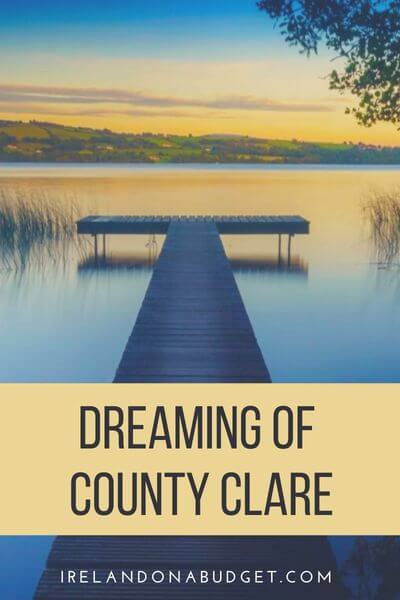 Here are some of the main attractions in this southwestern county, which is also the home of Shannon Airport.
Here are some of the main attractions in this southwestern county, which is also the home of Shannon Airport.
Ennis
Ennis is the county town of County Clare. It is a picturesque town with narrow, winding streets and historical buildings, not to mention plenty of lively pubs to drop into for a traditional Irish music session.
The history of Ennis is closely linked to the O’Brien dynasty, the descendants of Brian Boru, High King of Ireland from 1002 to 1014.
The O’Brien clan was responsible for building the Ennis Friary, a Franciscan monastery, which supported the religious needs of the community until the dissolution of the monastery in the 16th century.
Unlike other towns in Ireland, Ennis did not have any town walls.
As a result, many Catholics flocked to the town to do business and it became a thriving place, even into the middle of the 19th century.
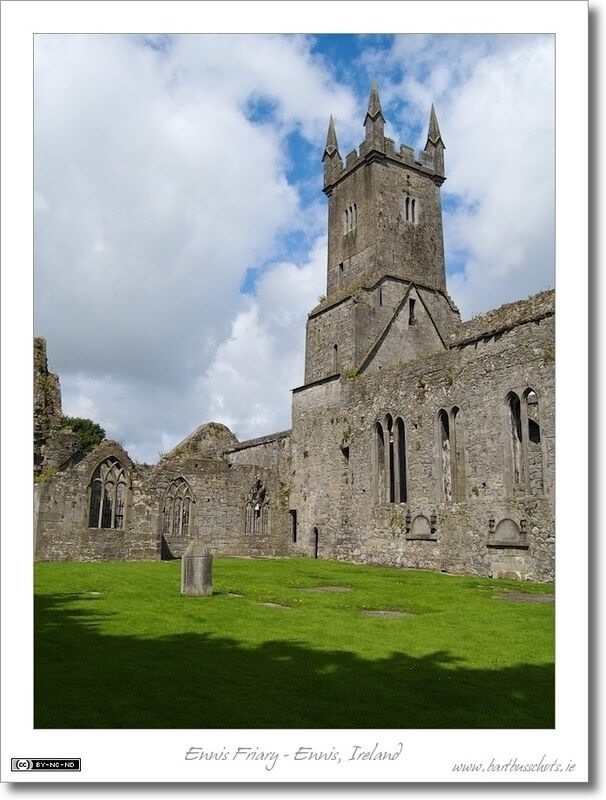
Be sure to stop at the Clare Museum to find out more about the town’s fascinating history.
In addition to its many pubs, there are several restaurants and eateries in Ennis.
Some of the best and most popular include Brogan's Bar & Restaurant, one of the town’s oldest family-run pubs, and winner of the prestigious AA Rosette award for fine cuisine.
If you’re looking for good food at a reasonable price, the Rowan Tree Cafe & Bar is a great choice.
Located in a restored 18th-century building, the eatery offers up a collection of modern cuisine dishes paired with local seasonal ingredients. You’ll also find the best selection of Irish craft beers here.
Read More: 9 Cool Underground Attractions in Ireland
Cliffs of Moher & O’Brien’s Tower
The Cliffs of Moher are located on the southwestern edge of the Burren.
Approximately 1.5 million people visit it each year.
An area famous for its dramatic limestone landscape, the cliffs rise to approximately 702 feet (214 meters) at their highest point and spread out for 8 km (5 miles) above the Atlantic Ocean.
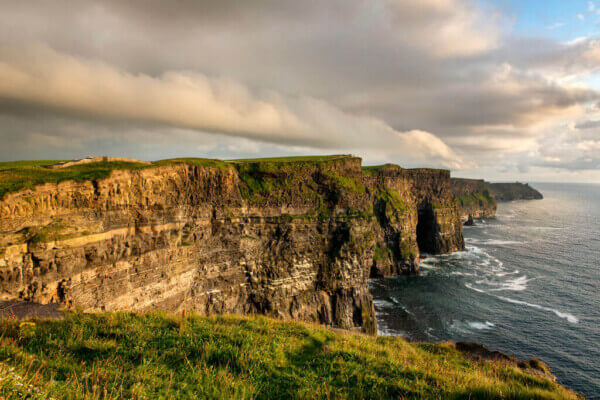
The cliffs are a Signature Discovery Point along Ireland’s Wild Atlantic Way.
You can see the Aran Islands from there, as well as the Maumturks and Twelve Pins mountain ranges in County Galway, in addition to Loop Head in Co. Clare to the south.
On a visit to the Cliffs of Moher, your first stop should be at the visitor center.
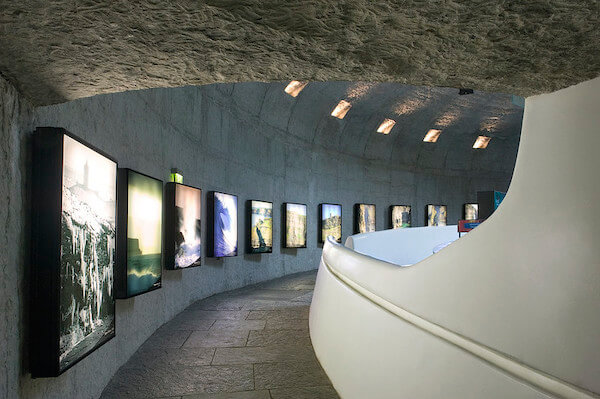
Constructed in 2007 into a nearby hillside, the center includes a number of exhibitions that bring the story of the cliffs to life.
The interactive media displays cover the geology, history, as well as the flora and fauna of the cliffs.
A large multimedia screen will give you a bird's eye view of the cliffs and an underwater video shows the caves that lie several hundred feet below.
A popular landmark along the cliffs is O’Brien’s Tower, which marks its highest point.
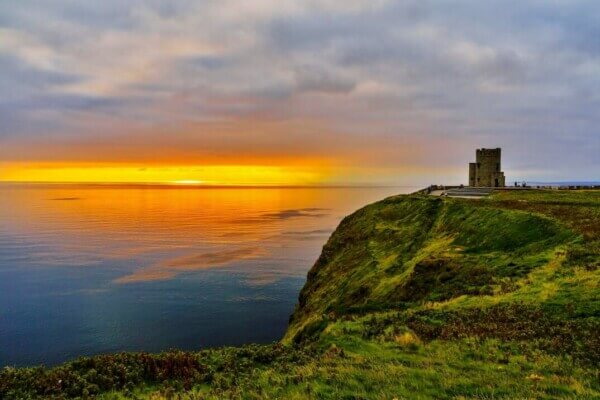
The tower was built in 1835 by the local landlord and Member of Parliament Sir Cornelius O’Brien as an observation tower for English tourists visiting the area.
You can get a different perspective of the cliffs by taking a cruise from nearby Doolin.
The hour-long excursion is available from mid-March through the end of October. Audio commentary is offered in English, French, German, Spanish, and Italian.
The Burren
The limestone formations in this area of County Clare are in stark contrast to Ireland’s more familiar green fields, but no less beautiful and truly a sight to behold.
The Burren, a UNESCO Global Geopark, is actually part of the Burren National Park, one of six protected regions of Ireland.
Its limestone landscape was formed as sediments in a tropical sea that covered Ireland approximately 350 million years ago.
This is why when you walk across the Burren, you will see the remains of ancient inhabitants of that tropical sea, including corals, sea urchins, sea lilies, and ammonites.
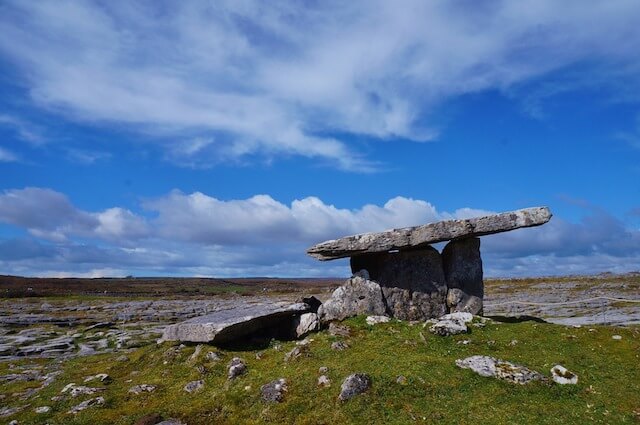
There are several ancient monuments to be found here as well. The most familiar and much-photographed one is the Poulnabrone Dolmen.
The large monument dates from the Neolithic Period (between 4,200 and 2,900 BC) and consists of three standing portal stones supporting a heavy horizontal capstone.
When the site was excavated in the 1980s, the remains of about 33 humans were found, along with various burial objects.
Free guided walks of the Burren are available during the summer season.
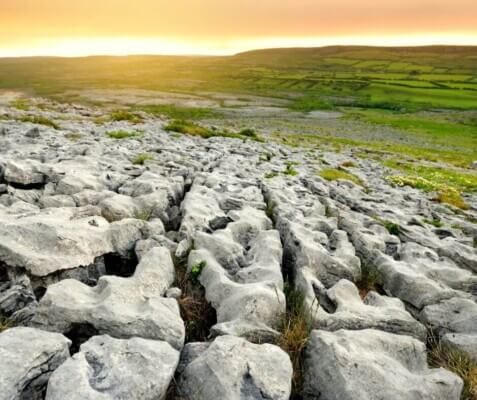
The 7 way-marked walking trails in the park will give you a more concise view of the landscape. The walks vary in length, from a 30-minute looped walk to a three-hour trek.
There is no visitor center at the park, although you will find information on the area at the Burren Centre in Kilfenora.
The Burren Tea Rooms and a craft shop are also on the premises.
Doolin
The quaint little village of Doolin in Co. Clare seems to offer something for everyone.
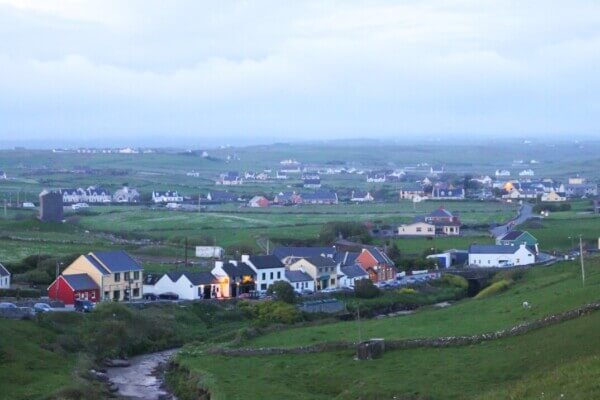
Not only is it the hub of traditional Irish music, but it also caters to a growing art and crafts community, with shops and cafes displaying some of the best products made in Co. Clare, including jewelry, textiles, artwork, and more.
Doolin, which is situated on the edge of the Burren, is the perfect place for walking and exploring the County Clare coastline.
Local man Pat Sweeney is happy to take tourists around and show them the sights he’s been looking at his whole life.
For the more adventurous, there’s the opportunity for scuba diving off the coast.
Caroline Hartigan, a Dutch native and Doolin resident, accompanies divers and compares the underwater environment to the Burren landscape that she has come to know love since moving to Ireland 25 years ago.
Nighttime is when all the fun starts in Doolin. While there are plenty of places to choose from, Gus O'Connor's is by far the best known for its trad music and delicious food.
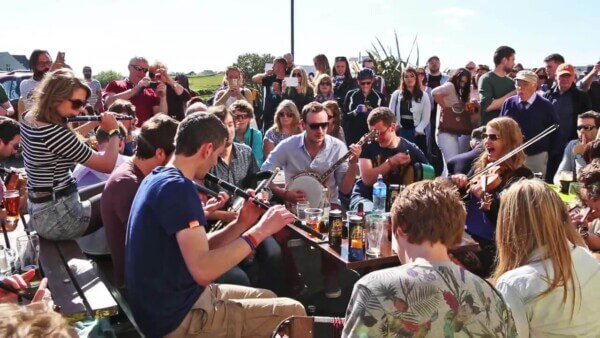
Traditional sessions take place seven nights a week from February until November and on weekends year-round.
Don’t leave Doolin without checking out some of the great stores in the village.
Some include the Ekotree Knitwear Studio and Visitor Centre, the Burren Smokehouse Visitor Centre, The Clare Jam Company, and much more.
See all of the shops in Doolin here.
Doolin Cave
Situated on the western edge of The Burren, the Doolin Cave contains one of the world’s longest known free-hanging stalactites. It is reported to be 7.3 meters (24 feet) in length.
The other two are located in caves in Mexico and in Lebanon.
The stalactite at Doolin Cave was created from a single drop of water over 400,000 years ago. It was first discovered in 1952 by members of an English caving club who were visiting the area.
In 2016, the cave was opened as a tourist attraction, despite the objections of the Speleological Union of Ireland, the country’s official representative cavers group.
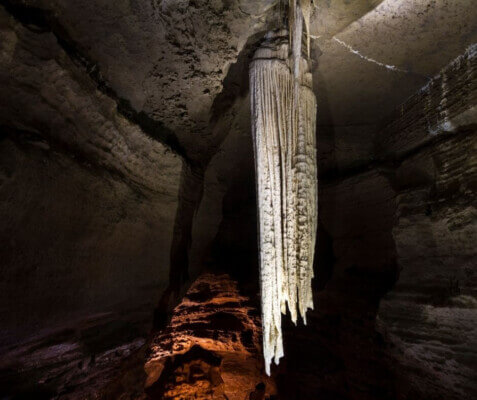
If you're fascinated by the Burren landscape, wait until you see it 100 feet below the surface. This is a true wonder of the natural world.
A nearby nature trail takes visitors to the original cave entrance.
Along the way, you see a variety of farm animals, including rare breeds of cattle, pygmy goats, Soay and Jacob sheep, and more.
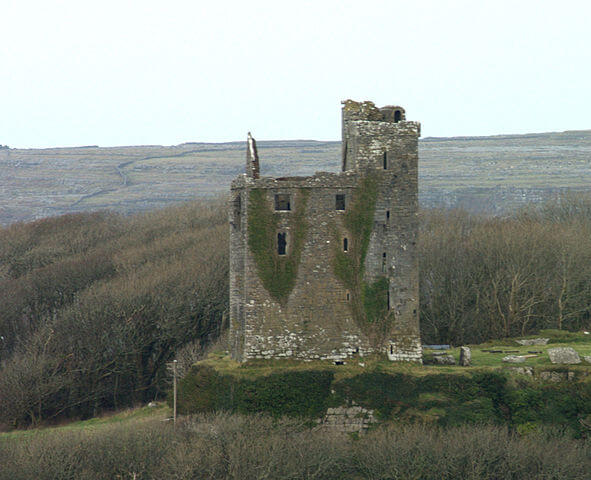
From the trail, you will get magnificent views of the surrounding Doolin and Burren landscape, as well as the ruins of Ballinalacken Castle, a tower house built in the 15th or early 16th centuries.
The caves are open daily from February through October from 10 a.m. to 6 p.m. and November to January from 10 a.m. to 4 p.m.
Admission is €17.50 for adults and €8.50 for children. Family tickets are €45 for two adults and two children, €50 for two adults and up to 4 children, and €55 for two adults and up to six children.
Ailwee Caves
About a 27-minute drive away you’ll find the Ailwee Caves & Birds of Prey Centre in Ballyvaughan, the heart of the Burren.
Take a 35-minute guided tour of the caves, which contain a beautiful frozen waterfall and areas that were once used by brown bears to hibernate.
Bears once roamed Ireland’s heavily forested terrain but became extinct during the 1st millennium BC due to the loss of a proper habitat and hunting.
Bear fossils have been found in the Ailwee Caves and in other caves around Ireland.
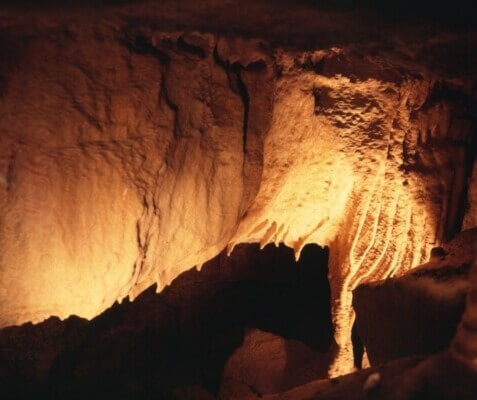
The Birds of Prey Centre, which received the “Best Entertaining Team Award” from The Irish Hospitality Awards in 2019, is home to one of the largest and most varied assortment of birds of prey in Ireland, including eagles, falcons, hawks, owls, and vultures.

On a two- to three-hour tour you’ll learn about the biology and conservation of these birds of prey, as well as the ancient art of falconry.
You’ll watch dynamic flying displays and get to participate in a Hawk Walk through woodlands and onto the beautiful Burren landscape.
The center is open daily from 10 a.m. to 5 p.m. You must book online first.
Tickets for cave tours and the center are €22 for adults, €12 for children aged 5-16, with children under 4 admitted free of charge. A family ticket costs €52 (two adults and 1 or 2 children). Tickets for students and seniors cost €17.
Lough Derg
On the east side of the county along the border with Counties Galway and Tipperary, you’ll find Lough Derg, the second-largest lake in the Republic of Ireland and third largest on the island of Ireland.
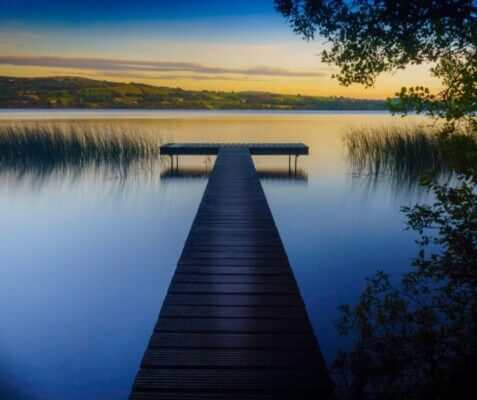
Don't miss a visit to Holy Island on Lough Derg, the site of an ancient monastic settlement.
The site includes a well-preserved round tower, the remains of six churches, a holy well, a graveyard with slabs dating from the 8th century, and a cell-like structure that is one of the most unusual in Ireland.
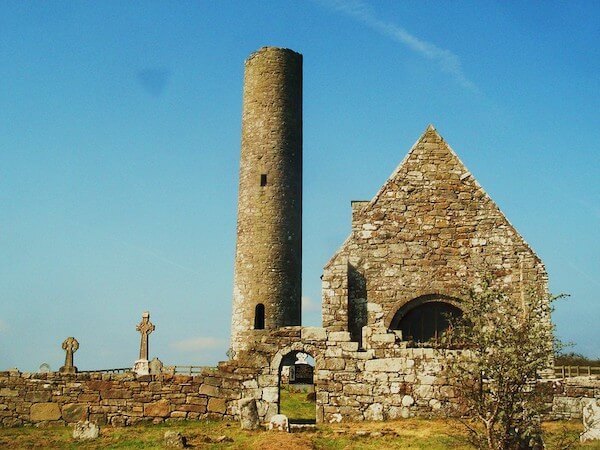
Local historian Gerald Madden offers boat trips to the island during the summer months. Visit the website above for contact information.
On the County Clare side of the lake, there are some nice places to visit, including the picturesque town of Killaloe, where you can pick up a Shannon River Cruise.
Bunratty Castle & Folk Park
Bunratty Castle is a large 15th-century tower house that is located between Limerick and Ennis. It is probably one of the most popular castle attractions in Ireland.
Run by Shannon Heritage, the attraction includes not only the castle but also an adjoining folk park.
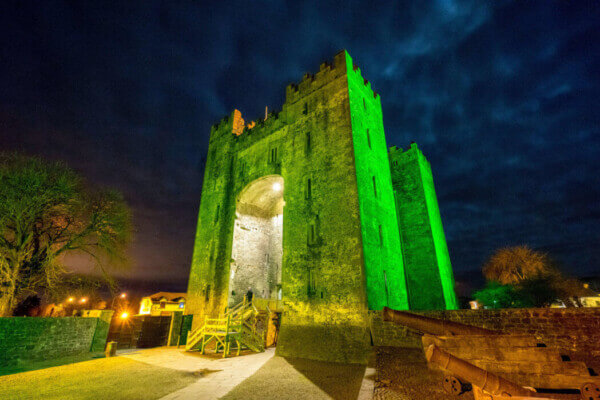
Robert De Muscegros, a Norman, built the first defensive fortress on the site of what is today Bunratty Castle. It was 1250 and the structure was no more than an earthen mound with a wooden tower on top.
The land was later granted to Thomas De Clare, who built the stone castle.
The most interesting aspect of the castle is perhaps the folk park, which contains over 30 buildings that form a “living village.”
They include a school, a doctor’s house, a pawnbroker’s, a pub, a draper, a printworks, and a grocery store, to name a few.
A surviving portion of the Bunratty estate is its beautiful gardens, constructed in 1804.
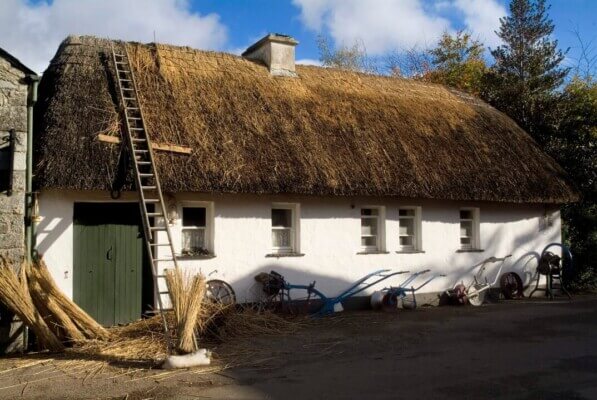
Bunratty Castle banquets are a popular attraction, especially for international visitors who want to experience what an ancient castle celebration might have been like hundreds of years ago.
The banquet experience includes medieval music and a four-course dinner with wine.
Banquets run nightly at the castle, at 5:30 p.m. and also at 8:45 p.m. You can book tickets here.
The Loop Head Peninsula
The Loop Head Peninsula in southwest County Clare is a scenic coastal drive that takes in the coastal villages of Kilrush, Carrigaholt, Kilbaha, Loop Head, Kilkee, and Kilrush.
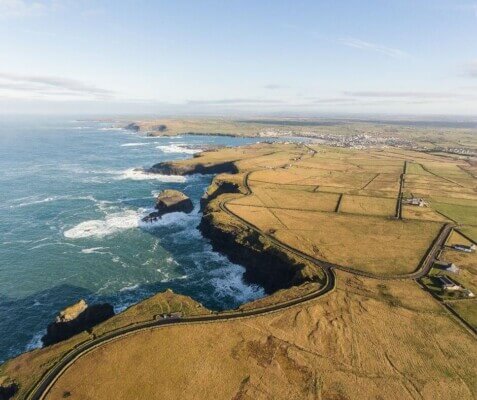
The entire drive is about 81 km (50 miles). If you’re visiting Clare, be sure to take in this small slice of heaven on the County Clare coast. You’ll get to enjoy panoramic cliff views and if you’re an outdoors enthusiast, the region offers opportunities for sea kayaking, sailing, scuba diving, and shark fishing.
At the tip of the peninsula is the Loop Head Lighthouse.

